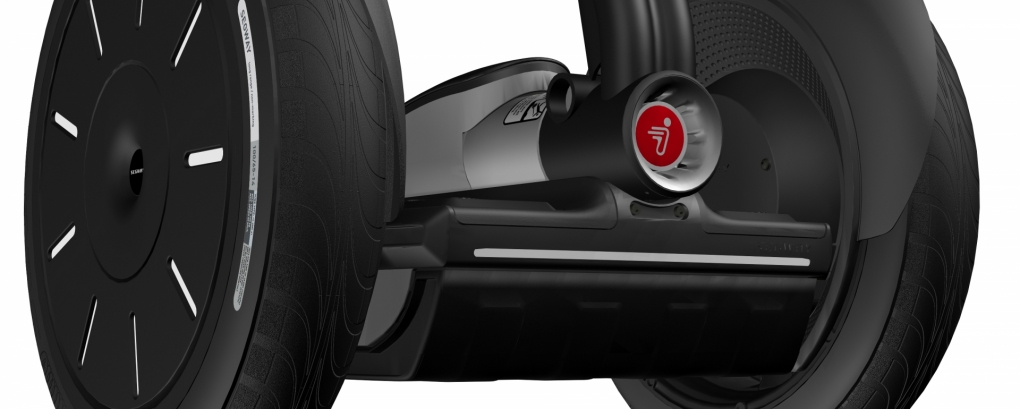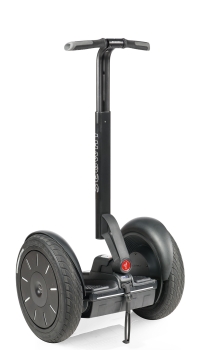
Please use our contact form to submit a query regarding the Segway PT, how to purchase or rent, event opportunities, or related questions.
Segway Switzerland
Eichzun 4
3800 Unterseen
Phone: +41 (0)33 442 80 00
E-Mail: welcome@segway.ch
Our office is open between 8 am and 5 pm on weekdays.

We move you
Segway has made it a passionate calling to move you - simply, efficiently and intelligently. The Segway Personal Transporter (PT) is the first two-wheel self-balancing electric vehicle to utilise patented dynamic stabilising technology. Today, we at Segway are focused on offering our clients a safe, unique product that newly defines personal movement for consumers and business clients.
How the Segway PT functions
When Dean Kamen introduced the Segway PT on ABC’s "Good Morning America", he described the vehicle as "the worldwide first self-balancing means of transportation for peopl". It is easy to understand what he means when you observe the vehicle in motion. Unlike a car, the Segway PT has only two wheels, which means it is capable of standing upright by itself.

How dynamic stabilisation functions
If you stand and lean so far forward that you overbalance, you will generally not fall flat on your face. The brain knows that you are not in a balance because the liquid in the inner ear has moved. This causes the feet to move forward to prevent a fall. As long as you lean forward, the brain will initiate the forward foot movement. Instead of falling, you move forwards one step after the other.


The Segway PT does pretty much the same, except that it has wheels instead of feet, a motor instead of muscles, a microprocessor instead of a brain and sophisticated balancing sensors instead of an inner ear balancing sense. Just like the brain, the Segway PT knows when the driver leans forward. To maintain balance, the vehicle moves the wheels at exactly at the right speed. Segway calls this behaviour "dynamic stabilisation" and has patented this unique process that enables the Segway PT to maintain balance on just two wheels.
The brain and the muscles
The Segway PT is comprised of an intelligent network of sensors, mechanical components, a drive system and a steering system. From the moment the driver stands on the vehicle, five gyroscopic sensors and two acceleration sensors begin to analyse the terrain and body position one hundred times per second.

The Segway PT has five gyroscopic sensors, even though only three are necessary, to measure the weight shifting forward and backward - the "pitch", left and right - the "roll" and the steering left and right - the "yaw". The additional sensors serve the redundance to make the product even more reliable. Information about the weight shifting of the driver and the steering movement is transmitted together with the information from additional inclination sensors to the "brain" of the Segway PT.
The brain consists of two redundant electrical circuit boards, which are respectively fitted with a group of microprocessors. The battery and motor winding are also redundant. They work together to share to the necessary propulsion of the workload. The Segway PT also has other additional microprocessors. The vehicle requires this much computing capacity because precise steering calculations must be carried out in the shortest possible time to prevent toppling. If a circuit board or the associated battery, motor winding or wiring fails during the drive, the other redundant system takes over all functioning. The system informs the driver about defects and initiates a controlled stop.
The microprocessors utilise advanced software that steers the vehicle. The program monitors all information that reaches it from the gyroscopic sensors and adjusts the speed of the electric motors accordingly. The electric motors, supplied from two rechargeable lithium ion batteries, are able to move each wheel independently at varying speeds.
If the vehicle is tilted forward, the motors in both wheels move forwards to prevent toppling over. If the vehicle is tilted backwards, the motors move the wheels backwards. If the driver operates the LeanSteer handlebars to turn left or right, the motor in one wheel moves faster than the other or in opposite directions so that the vehicle turns on the spot. While driving, the Segway PT takes centrifugal force into account and steers exactly the right curve radius that is necessary to maintain balance.
Drive as if skiing
The Segway PT feels like an extension of the body. The driver rapidly feels how the slightest steering impulse through body shifting sets the vehicle in motion. Segway driving is entirely intuitive and you can master control of the vehicle in the shortest time. Thanks to the patented and high precision LeanSteer technology, you can not only steer the vehicle to the exact millimetre, but test out your sports driving ability, just like carving on skis. Just try it out for yourself!
Newsletter

Segway Switzerland
Eichzun 4, 3800 Unterseen
Phone: +41 (0)33 442 80 00
E-Mail: welcome@segway.ch